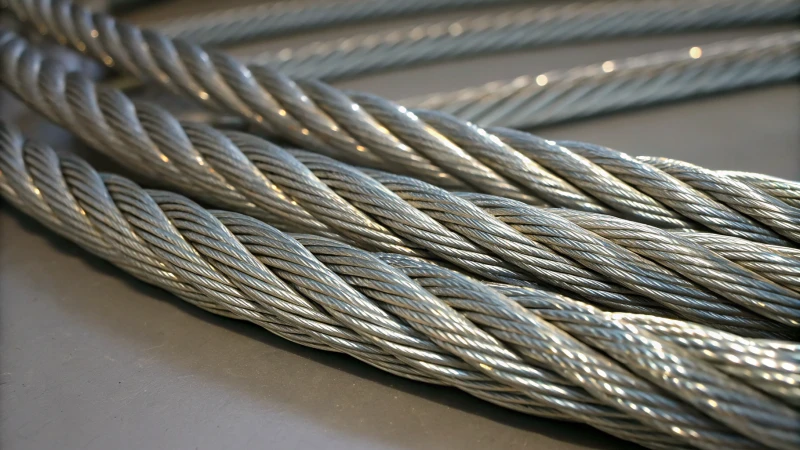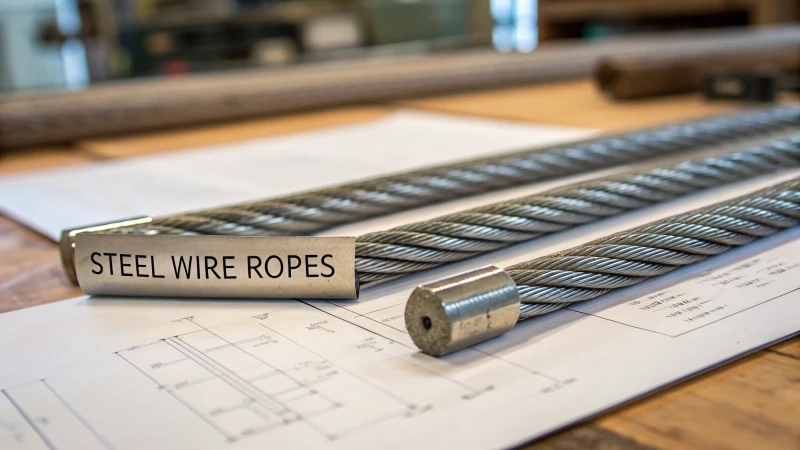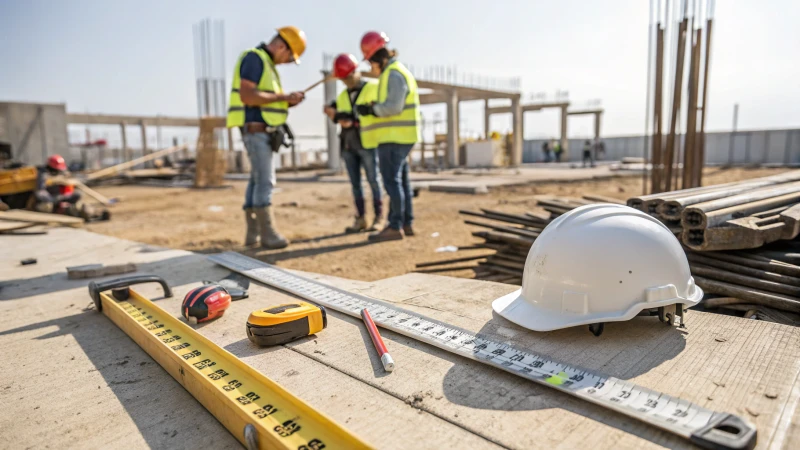
Ever felt like you're navigating a maze when it comes to steel wire rope specs? Trust me, I've been there too!
Metric specifications for steel wire ropes measure diameter in millimeters and load in kilograms, whereas imperial specifications use inches for diameter and pounds for load. The metric system is favored for its precision and standardization, making it a preferred choice globally.
Let me paint you a picture: imagine standing at a bustling construction site, trying to decipher the specs of the steel wire rope you need. I once had a similar experience when I had to choose between metric and imperial options for a project. It was like comparing apples to oranges, yet knowing both can hold the same weight.
The key differences in these measurement systems are more than just numbers—they impact everything from procurement to safety standards. Delving deeper into these differences can truly make or break your decision, influencing not just immediate needs but long-term industry trends and preferences. Let's explore how these choices ripple through global practices.
Metric system uses millimeters for wire rope diameter.True
Metric specifications measure wire rope diameter in millimeters.
Imperial system measures load in kilograms.False
Imperial specifications measure load in pounds, not kilograms.
Why is the Metric System Preferred Globally for Steel Wire Ropes?
Ever wonder why the metric system is the go-to choice for steel wire ropes worldwide? Let's unravel the mystery!
The metric system is preferred globally for steel wire ropes because it offers precision, ease of conversion, and standardization. This simplifies international trade and ensures consistent quality across engineering applications.

Precision and Consistency
I remember the first time I had to deal with steel wire ropes for a major project. The technical specifications were all in metric, and initially, it felt like learning a new language. But soon enough, I realized how this system allowed for a level of precision that was unmatched by the imperial system. Measuring in millimeters meant that even the tiniest adjustments were possible, which is crucial in industries where even a slight deviation can mean the difference between success and failure. For instance, a 19mm rope diameter offers a precise standard that beats the slightly less accurate 0.748 inches hands down.
| Measurement | Metric (mm) | Imperial (inches) |
|---|---|---|
| Diameter | 19 | 0.748 |
This kind of accuracy makes manufacturing a breeze, as products can consistently meet stringent international standards1.
Simplification in Global Trade
Navigating international trade can sometimes feel like solving a complex puzzle. But with the metric system, it's as if one piece just slots perfectly into place. Having a universal measurement system removes the need for conversion gymnastics, cutting down on errors and miscommunication. For global players in construction or heavy machinery2, this uniformity is a godsend, ensuring compatibility across different borders.
Standardization and Efficiency
Once I saw how adopting the metric system could streamline processes, it was like discovering a hidden superpower for efficiency. Standardized production processes translate to lower costs and faster turnaround times. Imagine being able to produce, inspect, and replace steel wire ropes with consistent specs effortlessly—it's like having a magic wand for inventory management.
Example of Standardized Production:
- Manufacturing: Factories stick to metric specifications, making operations smoother.
- Inspection: Quality checks based on metric measurements ensure consistent quality.
- Replacement: Sourcing identical replacements from anywhere in the world becomes a breeze with metric specs.
Adoption by Key Markets
Europe and Asia's love affair with the metric system isn't just a passing trend—it's reshaping markets globally. As someone who frequently deals with these regions, I've seen firsthand how their influence nudges others to align with their standards. Even in North America, where I mostly operate, companies are jumping on the bandwagon to embrace metric-based specs for international ventures.
In conclusion, while both measurement systems can achieve similar results functionally, the precision, ease of trade, and manufacturing efficiency offered by the metric system make it the preferred choice globally for steel wire ropes3.
Metric system ensures precise steel rope diameter.True
The metric system allows for exact measurements like 19mm, crucial for performance.
Imperial system simplifies global trade of steel ropes.False
The metric system simplifies trade by providing a universal standard, not imperial.
How Do Metric and Imperial Specifications Impact Safety Standards?
When I first grappled with the world of metric and imperial systems, I didn't realize how deeply they would affect safety standards in my line of work.
Metric and imperial specifications significantly impact safety standards by defining measurement precision. The metric system's uniformity is often favored for its accuracy, facilitating global standardization and compliance in safety practices.

Understanding the Metric System's Role
I remember the first time I had to switch my thinking from feet and inches to millimeters and kilograms. At first, it felt like learning a new language. But soon, I appreciated the precision the metric system offered, especially when every millimeter mattered in ensuring safety compliance4.
Example: Just think about a 19mm rope—a common size in my projects. In the imperial system, that's roughly 0.748 inches. That tiny difference can mean everything when safety is on the line.
| Metric Measurement | Equivalent Imperial |
|---|---|
| 19mm | 0.748 inches |
| 100kg | 220.46 lbs |
Imperial System in Practice
On the flip side, I've seen how the imperial system, which is so ingrained in North American practices, can lead to hiccups in international projects if not carefully converted. I once had a project where we almost overlooked a slight difference—a rope measured at 0.75 inches instead of the precise metric equivalent. That experience taught me just how critical these conversions are.
Consideration: A slight variation, such as a rope measured at 0.75 inches, can lead to non-compliance if not accurately converted and understood.
Impact on Global Safety Standards
As industries strive towards global standards, I've found myself balancing both systems more often than not. It's a dance of precision and conversion to meet diverse international standards5. For me, it means double-checking that procurement managers like myself have done the math right—because in construction and mining, precision isn't just important; it's everything.
Industry Insight: Over the years, I've learned that ensuring accurate conversions is crucial to avoid safety hazards. Whether it's lifting operations or something else, getting it right is non-negotiable.
Metric system improves global safety compliance.True
The metric system's precision and uniformity enhance consistent safety standards.
Imperial system prevents safety standard discrepancies.False
Imperial measurements often cause discrepancies, affecting international safety compliance.
What obstacles do professionals encounter when transitioning between systems?
Ever felt the struggle of moving from one system to another at work? It’s like learning a new language overnight!
Switching systems presents challenges such as mastering new interfaces, managing seamless data migration, ensuring compliance, and overcoming team resistance.

Adapting to New Interfaces
Imagine settling into a new car—everything feels unfamiliar, and it takes a while to remember where all the controls are. That's what adapting to new interfaces is like. When my team transitioned from our old, trusty system to a new platform, productivity took a hit. It was like trying to read a map upside down. Those of us who had been around longer found it particularly challenging, clinging to the comfort of the legacy systems we knew by heart.
Managing Data Migration
I remember our data migration day—the anxiety in the air was palpable. Ensuring that every bit of data moves safely to a new home without losing anything is a bit like packing up and moving house. You're always worried something important might get left behind or damaged. Our team put robust data management strategies6 in place, but still, the fear of errors causing data loss or corruption loomed large.
| Issue | Solution |
|---|---|
| Data Loss | Regular backups during migration |
| Corruption | Validation checks post-migration |
| Incompatibility Issues | Use of data transformation tools |
Ensuring Compliance
Compliance can be a tricky beast. When we switched systems, ensuring that everything adhered to industry regulations felt like navigating a bureaucratic maze. Missing even one small requirement could lead to penalties or worse. That’s why familiarizing ourselves with compliance requirements7 was non-negotiable.
Addressing Resistance to Change
Resistance to change is as natural as the seasons. When our company announced the switch, there were more than a few grumbles around the water cooler. It wasn't just about learning something new; it was about leaving behind familiar processes that felt like a second skin. We found that offering training sessions8 and keeping communication channels open made a world of difference in easing everyone into the transition.
Case Study Insights
I came across some fascinating research by McKinsey that revealed around 70% of change initiatives flop because of employee resistance and lack of support from management. This insight was invaluable for us—it helped craft better change management plans by showing us that understanding and addressing employee concerns upfront can make or break the success of a transition.
Adapting to new interfaces decreases productivity.True
Learning new layouts takes time, reducing initial work efficiency.
Data migration rarely causes data loss or corruption.False
Errors in data migration can lead to significant data issues.
How do I choose the right specification for my industry needs?
Ever found yourself knee-deep in options, trying to pick the right specification for your industry needs?
Choosing the right specification means understanding your industry's regulations, pinpointing operational needs, and teaming up with trusted suppliers. Ensure that the specifications meet safety, quality, and performance standards tailored to your specific application.

Understanding Industry Standards
I remember the first time I was tasked with choosing specifications for a project; it felt like stepping into a labyrinth of guidelines. Industry standards are like the map you need—they ensure products meet safety, quality, and interoperability criteria. For example, when I worked in construction9, I often turned to ISO standards, while friends in mining swore by ASTM specifications.
Analyzing Operational Needs
Consider this like tailoring a suit: it needs to fit perfectly. Assess your operational requirements by examining factors such as load capacity, environmental conditions, and durability. For instance, while ropes in the marine industry10 must resist saltwater corrosion, in construction, they might need to boast high tensile strength.
Consulting with Suppliers
Finding the right supplier is like finding a good partner—they understand your needs and help tailor solutions. Engaging with suppliers who grasp your industry can provide insights into material performance and help shape the perfect specifications. Here’s a handy way to compare supplier offerings:
| Supplier | Product | Material | Compliance | After-Sales Support |
|---|---|---|---|---|
| Supplier A | Wire Rope | Stainless Steel | ISO 9001 | 24/7 Support |
| Supplier B | Wire Rope | Galvanized Steel | ASTM Certified | Limited |
Aligning with Safety and Performance Benchmarks
Safety isn't just a box to check; it's a core part of project success. Make sure your specifications meet the required safety and performance standards. For instance, I’ve often had to ensure that construction projects adhered to OSHA regulations, while my peers in mining focused on MSHA guidelines. This step is crucial for effective risk management11.
Navigating these steps might feel daunting at first, but with each project, it becomes second nature. Remember, choosing the right specification is not just about following a checklist—it's about building a foundation for success.
ISO standards apply to all industries equally.False
Different industries prioritize different standards; ISO is common in construction.
Consulting suppliers helps tailor specifications.True
Suppliers provide insights into material performance and compliance.
Conclusion
This article explores the differences between metric and imperial steel wire rope specifications, highlighting the advantages of the metric system in precision, global trade, and safety standards.
-
Explores specific international standards for steel wire ropes, ensuring consistency in quality and safety. ↩
-
Discusses how heavy machinery industries benefit from using the metric system for compatibility and efficiency. ↩
-
Provides further insight into why metric specifications are preferred for steel wire ropes in global contexts. ↩
-
Explore how the metric system's precision contributes to maintaining high safety standards in various industries. ↩
-
Learn about the efforts to align measurement systems with global safety standards. ↩
-
Learn about effective data management strategies to ensure seamless migration between systems. ↩
-
Discover compliance requirements crucial for implementing new systems in various industries. ↩
-
Understand how employee training can facilitate smoother transitions during system changes. ↩
-
Understanding ISO standards is essential for ensuring that construction materials meet global safety and quality benchmarks. ↩
-
Learn about corrosion-resistant materials in marine applications to select ropes that withstand harsh environments. ↩
-
Review OSHA and MSHA guidelines to ensure compliance with essential safety standards in construction and mining. ↩

